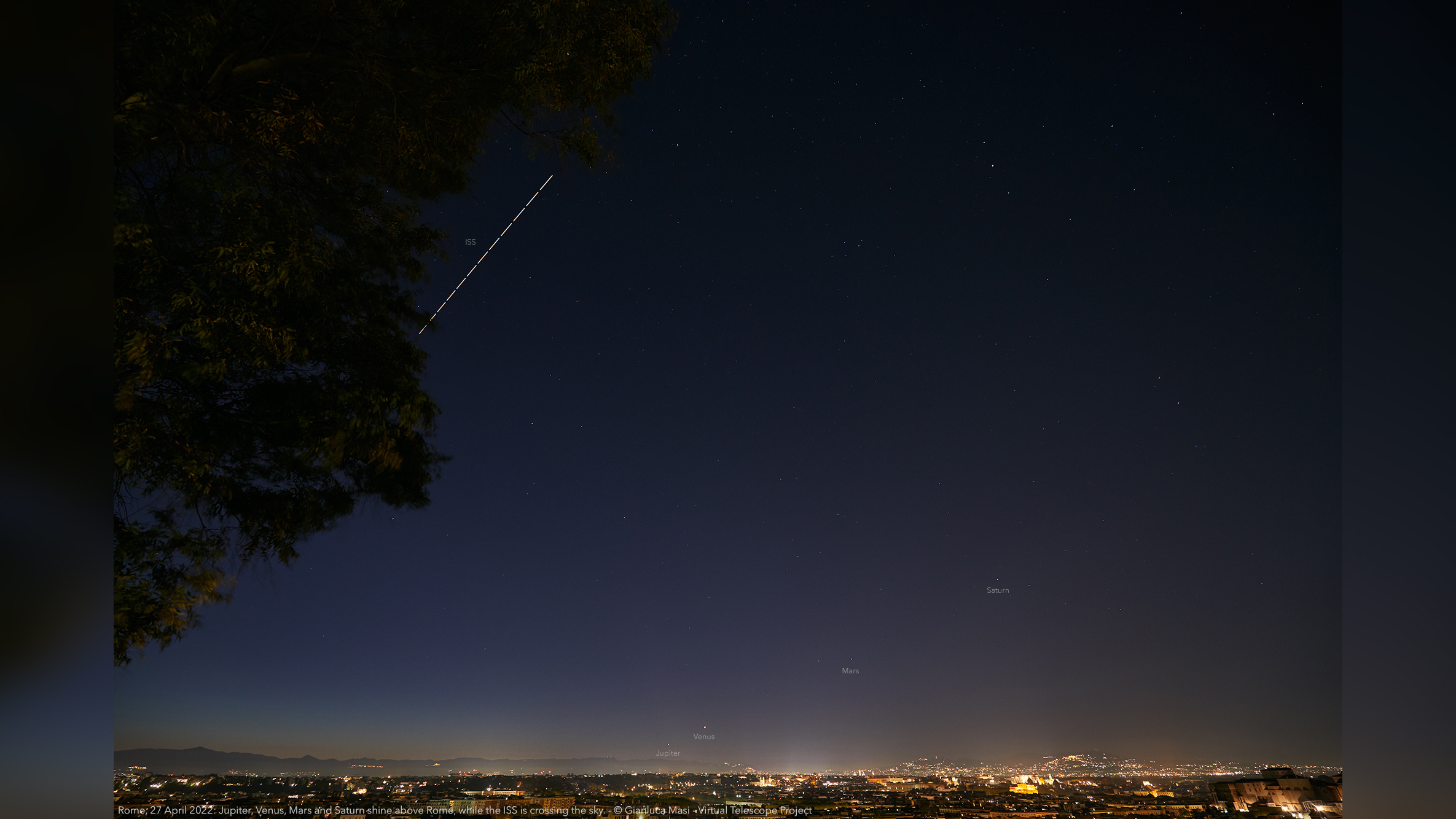ISS and China's space station photobomb image of 4 planets aligned in the sky
An astrophysicist captured the predawn parade from Rome.

The International Space Station and China's space station photobombed a four-planet line-up in the early morning sky for Italian astrophysicist Gianluca Masi.
"While looking at the night sky is always amazing, sometimes the experience exceeds our expectations," Masi, who is the founder of the Virtual Telescope Project, said in a statement. After hopping into his car at 4 a.m. local time, he reached one of his favorite scenic spots in Rome. "No less than four planets (Jupiter, Venus, Mars and Saturn) were waiting for me, with a sharp moon crescent joining the show in the same spot of Jupiter and Venus (the brightest planets), hanging on the South-Eastern horizon minutes before sunrise," Masi said.
Such planetary alignments occur when our neighboring worlds enter the same region of the sky from Earth's perspective. But the "stars" seemed to align perfectly today for Masi when two orbiting spacecraft also peeked into the line-up.
Related: Dazzling photos of the solar eclipse from Antarctica

Masi knew the ISS and Tianhe were also crossing the sky within 15 minutes of each other around the same time. So he managed to capture the entire show using a Canon 5D mIV DSLR with a wide-field Canon EF 16-35mm f/4L IS USM lens, he said.
Being so big and shiny — 356 feet (109 meters) tip to tip — the ISS appears as one of the brightest objects in the sky at most times. It orbits about 260 miles (420 kilometers) above our planet, trekking at about 17,500 mph (28,000 km/h), according to NASA. That means the lab circles Earth every 90 minutes, traveling daily through 16 sunrises and sunsets, NASA said.
China's orbiting lab is much smaller than the ISS but still visible to an unaided eye; it circles the Earth at an average altitude of between 211 and 280 miles (340 and 450 km), according to Live Science sister site Space.com.
Get the world’s most fascinating discoveries delivered straight to your inbox.
If you want to catch the planet parade, the best viewing occurs about an hour before sunrise, NASA said. The four planets have been visible in these wee morning hours in the Northern Hemisphere since April 23 and will remain that way through early July, according to NASA. The parade will gain a member —Mercury — as early as June 10 in places with a flat, eastern horizon, Live Science previously reported. That five-planet cosmic march will appear to move from east to south.
Originally published on Live Science.
Editor's note: This article was updated to correct the altitude of the ISS, which should be about 420 km, not 350 km as had been stated.
Jeanna Bryner is managing editor of Scientific American. Previously she was editor in chief of Live Science and, prior to that, an editor at Scholastic's Science World magazine. Bryner has an English degree from Salisbury University, a master's degree in biogeochemistry and environmental sciences from the University of Maryland and a graduate science journalism degree from New York University. She has worked as a biologist in Florida, where she monitored wetlands and did field surveys for endangered species, including the gorgeous Florida Scrub Jay. She also received an ocean sciences journalism fellowship from the Woods Hole Oceanographic Institution. She is a firm believer that science is for everyone and that just about everything can be viewed through the lens of science.
